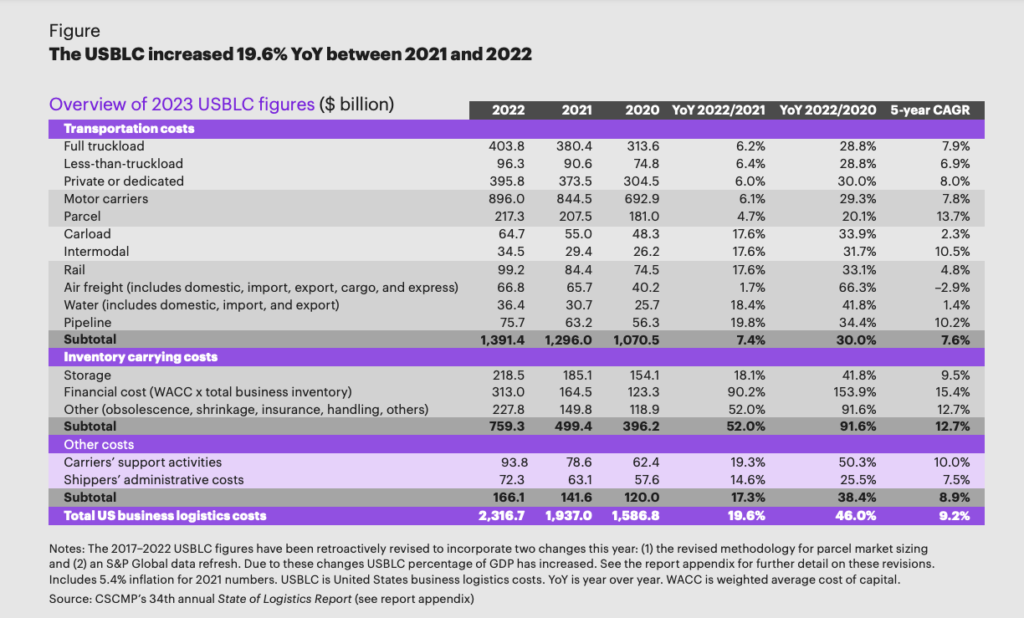In 2022, U.S. business logistics costs hit $2.3 trillion, representing the highest percentage (9.1%) of the national gross domestic product ever, according to the 2023 State of Logistics report.
The report, produced annually for the Council of Supply Chain Management Professionals (CSCMP) by global consulting firm Kearney, gives a snapshot of the U.S. economy through the lens of the logistics sector.
U.S. business logistics costs grew 19.6% year over year, driven by a 52% year over year increase in inventory carrying costs (storage, financial cost, and other factors such as insurance, obsolescence and shrinkage). Transportation costs also rose 7.4% year over year, and shipper administration and carriers’ support activities costs rose 17.3%.

“Coming off this performance, supply chain demand is likely to remain stagnant or even diminish over the remainder of 2023,” according to the executive summary of the report.
Below are four findings from the report that may be relevant to the wholesale distribution market.
4 Key Findings from CSCMP’s 2023 State of Logistics Report
1. eCommerce Sales Not Slowing Down
In 2022, the U.S. eCommerce market grew by 8%, to $1.03 trillion (compared to $871 billion). It is now 14.5% of the entire U.S. retail market.
2. 3PLs Invest in Tech Offerings
Third-party logistics providers are investing more capital into their technology offerings, as opposed to shippers, according to the report.
Respondents indicated 96% of 3PLs have migrated to the cloud (shippers indicated 86% of them have), while 80% of 3PLs are investing in IoT (77% for shippers).
3. Reshoring Movement Continues
“For many businesses, reshoring now appears to have shifted from a strategic possibility to a market reality,” the report authors wrote.
According to the Kearney Reshoring Index, American imports of Mexican manufactured goods have grown by 26% (dating back to spring 2020).
4. Warehousing Demand Wanes
In 2022, the red-hot demand for warehouse space has waned, resulting in overstock. Warehouse vacancy rates fell as low as 2.9%, down 41% from the 4.9% high of 2021 and well below pre-pandemic levels, which hovered around 6.5%.
“Low vacancy rates resulted in higher rents, though this rise was mitigated by robust construction of additional warehousing space. Even as available space is increasing, companies are hesitating to occupy it as they try to get rid of excess inventory and use existing space more efficiently,” the report found.
According to the report’s executive summary, pricing and warehouse availability are expected to be more favorable for shippers in 2023.
Related Posts
-
The electrical products distributor says it also completed 20 acquisitions and welcomed 2,100 new associates…
-
A Wall Street Journal report details how Amazon has revamped its vast U.S. logistics network…
-
The St. Louis-based waterworks and industrial supplies distributor posted record sales in its fiscal 2022…






